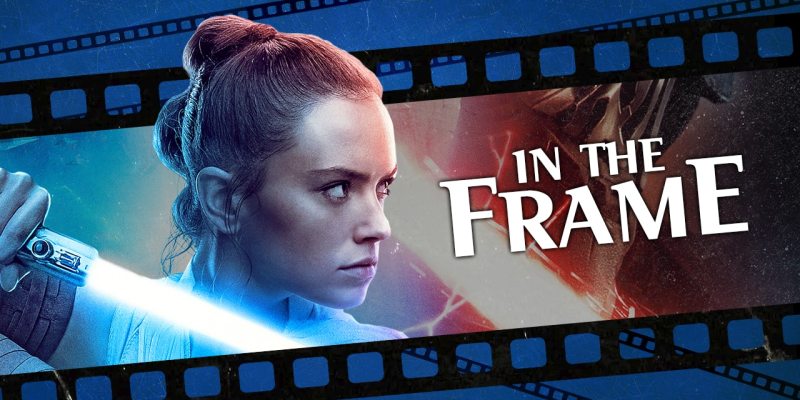First it was #ReleaseTheJJCut. Now it’s a glimpse at the Colin Trevorrow “Star Wars: Duel of the Fates” script breakdown.
It seems safe to describe The Rise of Skywalker as a disappointment, as much as a billion-dollar film can be a disappointment. Despite record-breaking pre-sales, it had the weakest opening of the sequel trilogy. Despite a more advantageous holiday schedule, it performed behind The Last Jedi. It got the worst reviews in the franchise. It earned the lowest CinemaScore of a live-action Star Wars.
There was a lot of pressure and expectation on The Rise of Skywalker, particularly given the way in which it was sold as the culmination of the Star Wars saga (despite the reality that Disney will never let Star Wars end). As such, it makes sense that fans have turned to the fantasy of alternate versions of the film that was released.
The internet has been abuzz with rumors about how and why the film ended up the way that it did. To be fair, there has been plenty of fodder for speculation. Matt Smith was cast in a “key role” but he did not appear in the final cut. The early running time rumors suggested that The Rise of Skywalker would be the longest Star Wars film, but that was quickly revised.
These rumors have galvanized fans in the month since The Rise of Skywalker released. Prompted by suggestions that the version released was not what J.J. Abrams had intended, fans have campaigned on social media, trying to force Disney to #ReleaseTheJJCut. Earlier this week, what was rumored to be Colin Trevorrow’s breakdown for the film – at that point titled Duel of the Fates – leaked on Reddit.

Of course, there is little reason to believe that these rumors are based in fact, though Britt Hayes at The A.V. Club has apparently confirmed from a second source that the Trevorrow leak is genuine. Regardless, these rumors are appealing to fans because they offer a glimpse of what might have been, a window into an alternate world where a better version of The Rise of Skywalker was released.
There are certainly appealing aspects to Duel of the Fates. The breakdown avoids bringing back Emperor Palpatine as the big bad without any foreshadowing, even if it includes a cameo. The draft also carries over a lot of elements from The Last Jedi – it includes a sizable role for the marginalized Rose Tico, doesn’t reverse the revelations about Rey’s parents, and doesn’t redeem Kylo Ren.
Of course, a draft is not a finished film. There is no way to know what a released version of Duel of the Fates would have looked like. After all, Trevorrow hardly has a spotless record in cinematic execution, having helmed the divisive Jurassic World and the misfire The Book of Henry. (The Book of Henry allegedly contributed to his departure.) It is possible to execute good ideas in terrible ways.
There are a lot of aspects in Duel of the Fates that would depend heavily on execution. The “Lovecraftian” ancient Sith Lord might have made a welcome change from another planet-destroying superweapon, but it could have become computer-generated noise. The concept of Luke haunting Kylo Ren could invigorate Mark Hamill and Adam Driver, but it could also be groan-inducing.

Even ignoring Trevorrow’s direction, an early draft still has to filter through layers of studio notes and revisions that would undoubtedly have changed it. After all, the original Star Wars was reportedly saved not during writing or filming, but in the editing bay. George Lucas famously didn’t actually decide that Darth Vader was Luke’s father until a later draft of The Empire Strikes Back.
More to the point, there is just as much bad as good in Duel of the Fates. There is still a lot of fan service, including a brawl between Kylo Ren and the ghost of Darth Vader. While the revelation that Kylo Ren murdered Rey’s parents would help affirm he was beyond redemption, it feels like a little too much. The characterization of the dynamic between Poe and Rey is also highly questionable.
Of course, part of the appeal of longing for something like Duel of the Fates is the comfort in knowing that – unlike The Rise of Skywalker – it is by definition incapable of letting fans down. It can never disappoint its audience, because it will never actually exist. The audience can read the breakdown and create a film in their mind’s eye, filtered through their expectations and desires.
There is a long history of “lost” geek culture, of pieces of art that almost were but never will be: Alejandro Jodorowsky’s Dune, Star Trek: Phase II, even George Lucas’ Star Wars sequel trilogy. To some fans, these alternate versions are more appealing than the franchise iterations that actually materialized – often precisely because they haven’t materialized.

To be fair, there have been films that have been reconstructed from disastrous theatrical cuts. Blade Runner is perhaps the most obvious example, having filtered through quite a few different cuts and iterations before finding the best possible version of itself. Ridley Scott has a habit of this, with Kingdom of Heaven also benefiting greatly from a director’s cut.
There are other examples. The “assembly cut” of David Fincher’s Alien 3 is a vast improvement over the version released in cinemas. Even Batman v Superman benefits greatly from The Ultimate Edition. However, very few of these represent complete revisions of the original work, a ground-up rebuilding of something that was thought completely lost.
After all, the modern franchise age has made studios more protective of their intellectual properties. The concept of “canon” is so strong – and the creative ego and financial capital invested in these films so great – that these sorts of fundamental revisions and resurrections would be equivalent to heresy. Ironically, the fact that these objects seem so unattainable is part of the allure.
These objects exist conceptually, without any worry about the mechanics and compromises involved in putting the appealing elements together. Anything can be perfect, so long as it doesn’t have to be real. What happens if the “Snyder Cut” is ever released? It seems highly unlikely a perfect Justice League movie could be assembled from the ingredients available. It is more appealing as an idea.
“Reconstructions” of these lost items frequently disappoint. The Richard Donner Cut of Superman II is fascinating but feels imperfect and incomplete — cobbled together from rehearsal footage and alternate takes. Recent comic book adaptations of Harlan Ellison’s original Star Trek script “The City on the Edge of Forever” and William Gibson’s Alien 3 are fine stand-ins, but just facsimiles.
It is interesting to wonder whether this appetite for alternate versions is part of larger trends. Recent years have seen much discussion about the fracturing of consensus reality, a loosening grip on the idea of a single verifiable truth in an era of “alternative facts.” Why should people have to accept the version of The Rise of Skywalker that was released, when they want an alternative?
On the other hand, perhaps this is a response to the renewed emphasis on “canon.” In the old days, franchises could zig and zag from one installment to the next, with the Rocky and James Bond series changing direction dramatically from film to film. With greater emphasis on the larger franchise, each installment becomes more important as an authoritative statement. The stakes are higher.
Of course, there are alternate versions of The Rise of Skywalker out there. Fan fiction is thriving in the wake of the film’s release, with countless writers and artists creating their own idealized ending to the saga. Naturally, these endings come without the weight of “canon,” the stamp of studio approval, or the validation of wide release, but they can be what each fan wants them to be.
While fans might dream of a better or more satisfying version of The Rise of Skywalker, one that delivers everything that they wanted or expected from the ninth film in the Skywalker Saga, the reality is that those audiences relying on official validation will have to make peace with the version that we have.
